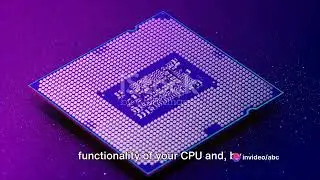MOV (Move) The Basic Instruction
The MOV (Move) instruction is a fundamental and widely used instruction in assembly language and machine language programming. It is employed to transfer data between memory locations or between registers within the CPU. The syntax for the MOV instruction may vary slightly depending on the specific assembly language, but its core purpose remains consistent.
Syntax:
bash
Copy code
MOV destination, source
Destination: The location where the data will be moved. This can be a register or a memory address.
Source: The source of the data. This can be a register, a memory address, or an immediate value.
Examples:
Register to Register:
assembly
Copy code
MOV AX, BX ; Move the content of register BX into register AX
Immediate to Register:
assembly
Copy code
MOV CX, 10 ; Move the immediate value 10 into register CX
Memory to Register:
assembly
Copy code
MOV DX, [1000] ; Move the content of the memory address 1000 into register DX
Register to Memory:
assembly
Copy code
MOV [2000], SI ; Move the content of register SI into the memory address 2000
Immediate to Memory:
assembly
Copy code
MOV [3000], 42 ; Move the immediate value 42 into the memory address 3000
Register to Segment Register:
assembly
Copy code
MOV DS, AX ; Move the content of register AX into the Data Segment (DS) register
Explanation:
The MOV instruction is versatile and can be used to transfer data between various combinations of registers, memory locations, and immediate values.
It is crucial to understand the size and type of data being moved (e.g., byte, word, doubleword) to ensure proper execution and avoid unexpected behavior.
MOV instructions are foundational for initializing variables, transferring data between different parts of a program, and facilitating arithmetic and logic operations.
In some assembly languages, specific variations of the MOV instruction may exist for handling different data sizes, such as MOV BYTE, MOV WORD, or MOV DWORD.
The MOV instruction is often found in conjunction with other instructions to implement higher-level operations and functionality in a program.
Remember that the exact syntax and supported operands may vary based on the specific assembly language and processor architecture being used.



















